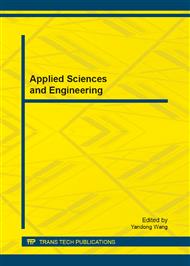p.482
p.489
p.496
p.502
p.508
p.515
p.523
p.529
p.534
Gene Expression Programming Based Classification for Automated Birth Defects Detection
Abstract:
With the rapid development of digital medicine, improving the diagnostic accuracy for birth defects (BD) by using data mining techniques has been paid more attentions by researchers. In this paper, an automated classification technique based on Gene Expression Programming (GEP) to detect the defect infants, named Birth Defects Detection based on Gene Expression Programming (BDD-GEP) is proposed. The main contributions of this paper include: (1) proposing two contrast inequalities (CIs) for birth defects detection: the defection contrasts to normal and the normal contrasts to defection, (2) designing a new fitness function to mine the normal and defect CIs by GEP, (3) presenting a method to select useful CIs for classification, (4) implementing the BDD-GEP algorithm through combining the proposed CIs with k-Nearest Neighbor algorithm. In order to evaluate the proposed classification method, 11,897 infant samples from national center for birth defects monitoring of China were used, and the method was compared with several existing classification methods. The experimental results show that the overall detection accuracy of BDD-GEP was as high as 87.8%. Specifically, the F-measure of the detect samples was about 70.2%, and the F-measure of the normal samples was about 92.3%.
Info:
Periodical:
Pages:
508-514
Citation:
Online since:
September 2012
Authors:
Price:
Сopyright:
© 2012 Trans Tech Publications Ltd. All Rights Reserved
Share:
Citation:


